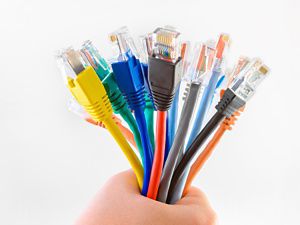Ethernet is the technology that is most commonly used in wired local area networks (LANs). A LAN is a network of computers and other electronic devices that covers a small area such as a room, office, or building. It is used in contrast to a wide area network (WAN), which spans much larger geographical areas. Ethernet is a network protocol that controls how data is transmitted over a LAN. Technically it is referred to as the IEEE 802.3 protocol. The protocol has evolved and improved over time to transfer data at the speed of a gigabit per second.
Many people have used Ethernet technology their whole lives without knowing it. It is most likely that any wired network in your office, at the bank, and at home is an Ethernet LAN. Most desktop and laptop computers come with an integrated Ethernet card inside so they are ready to connect to an Ethernet LAN.
To set up a wired Ethernet LAN, you need the following:
Ethernet requires technical knowledge in computer science to understand the mechanism behind the Ethernet protocol fully. Here is a simple explanation: When a machine on the network wants to send data to another, it senses the carrier, which is the main wire connecting all the devices.
If it is free, meaning no one is sending anything, it sends the data packet on the network, and all other devices check the packet to see whether they are the recipient. The recipient consumes the packet. If there is already a packet on the highway, the device that wants to send holds back for some thousandths of a second to try again until it can send.








No comments:
Post a Comment